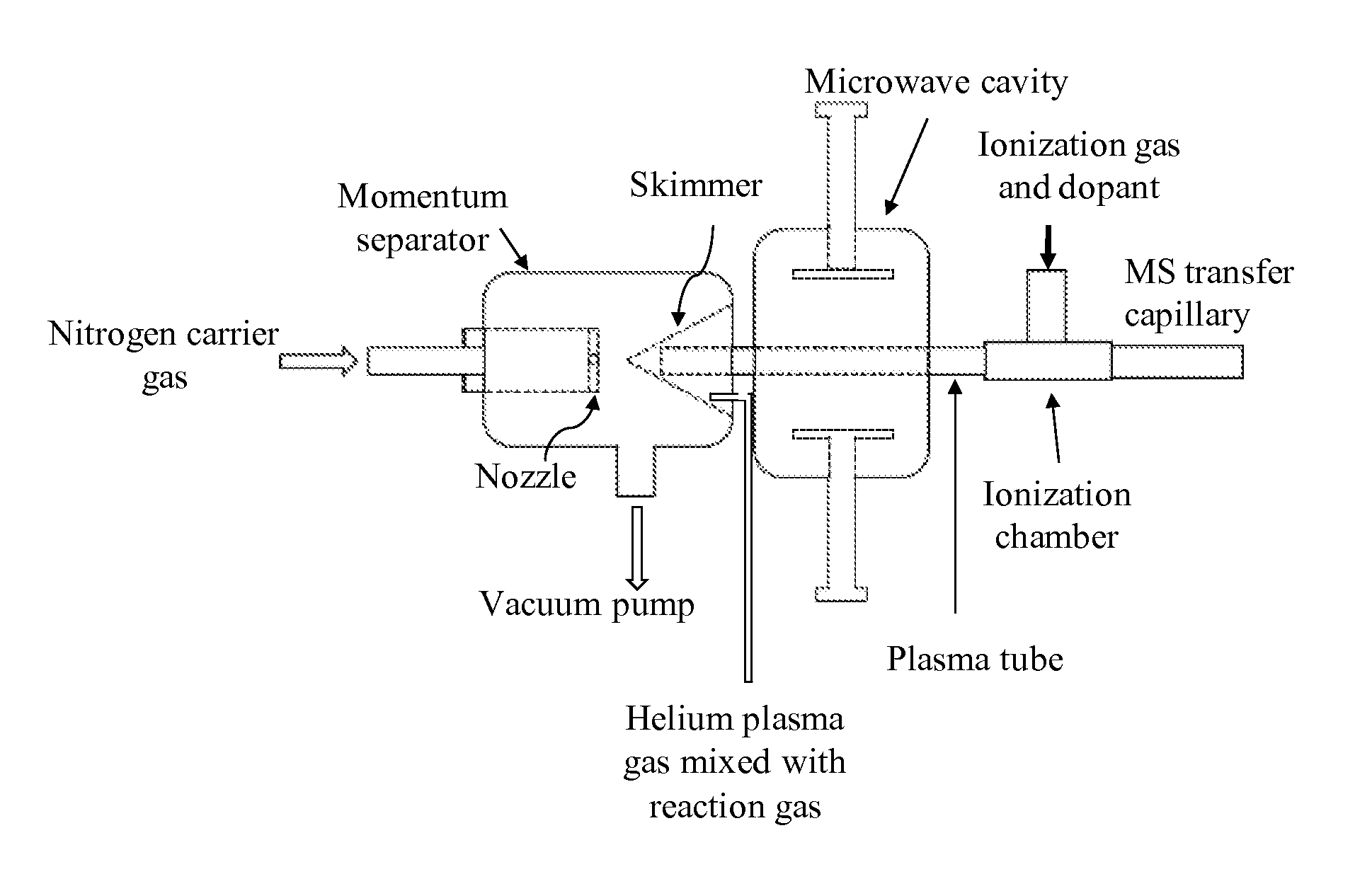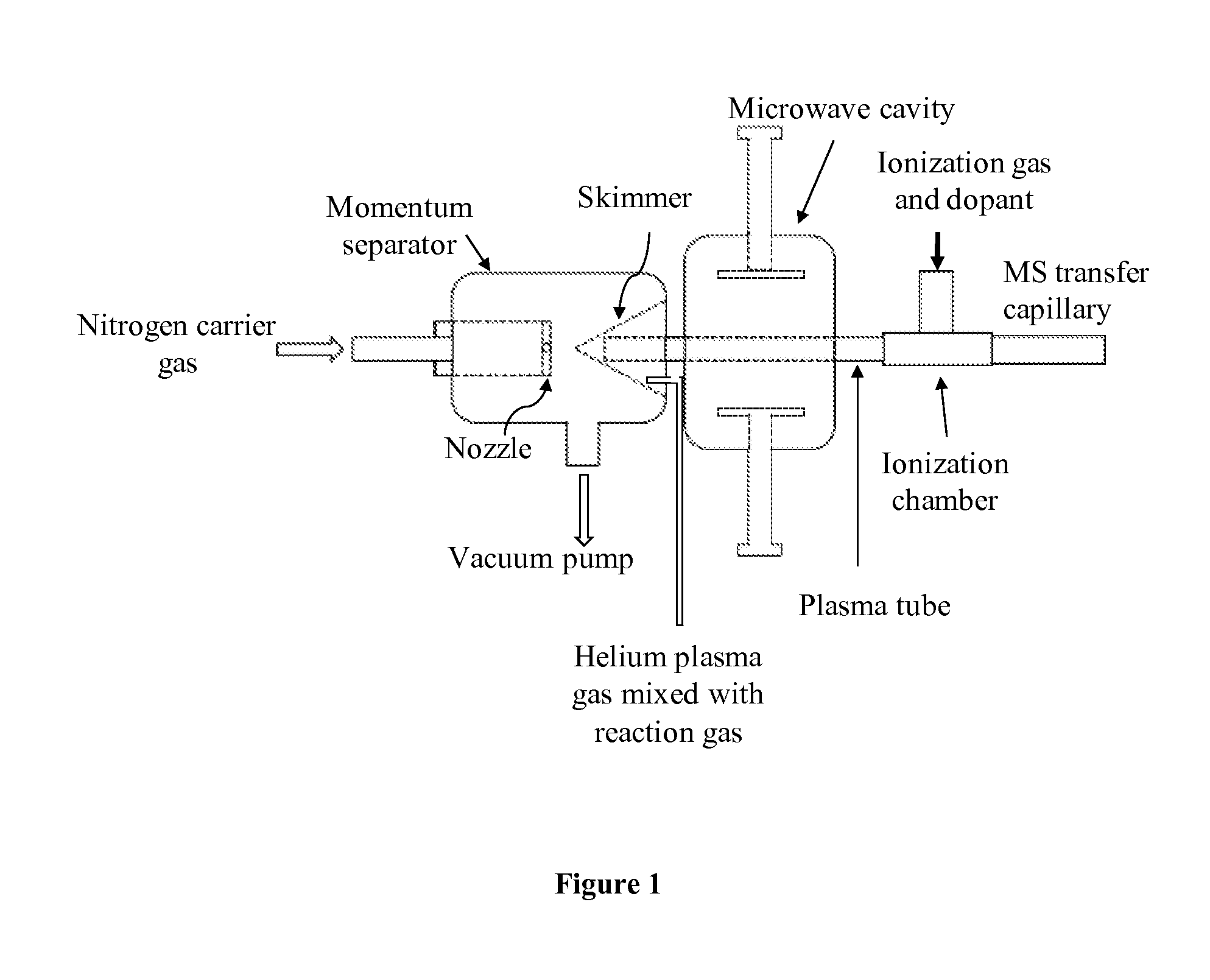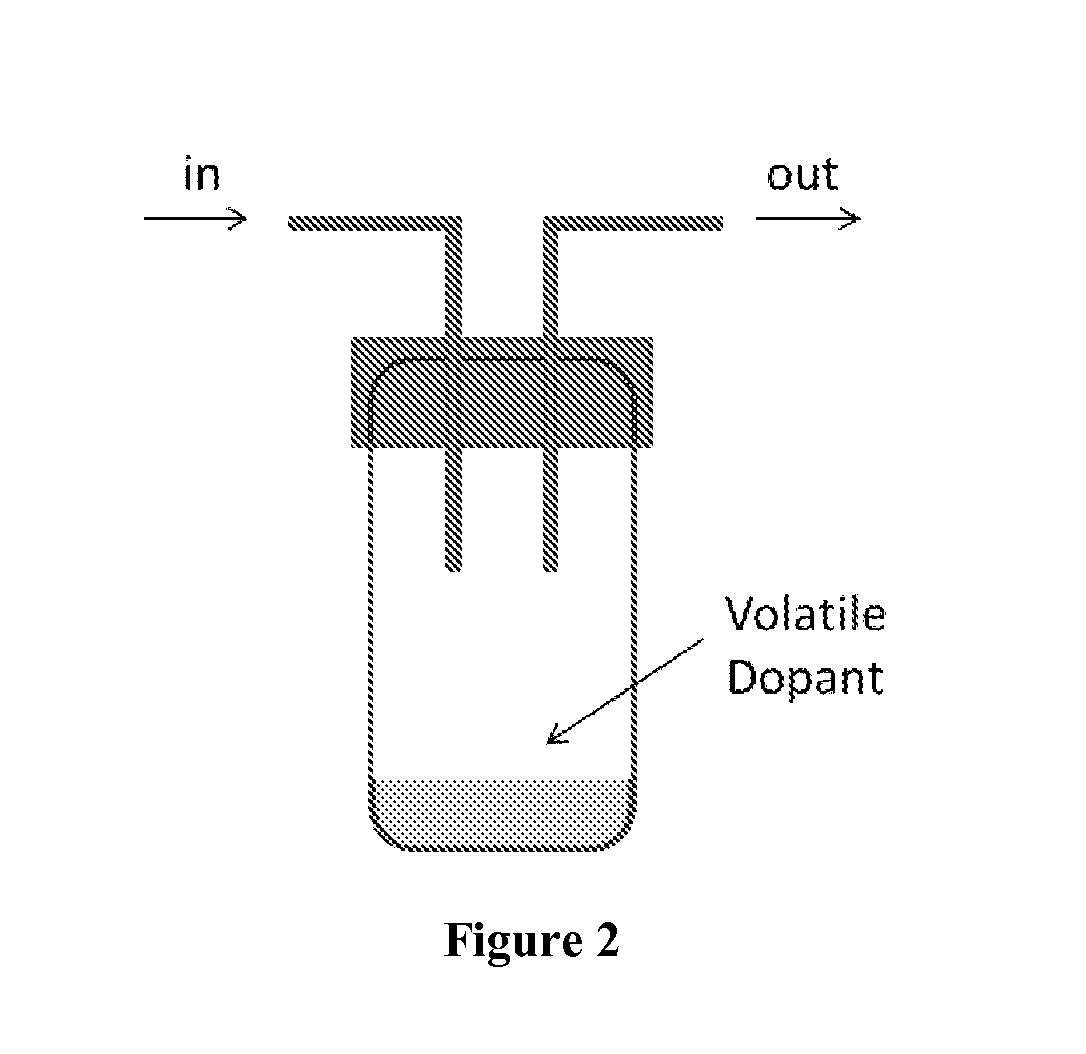Apparatus and methods for plasma-assisted reaction chemical ionization (PARCI) mass spectrometry
a technology of mass spectrometry and plasma, which is applied in the field of electrochemical mass spectrometry, can solve the problems of reducing affecting the quantitative and isotopic analysis of compounds with high molecular weight, and limiting the utility of crims in detecting negative ions, so as to achieve the effect of eliminating losses
- Summary
- Abstract
- Description
- Claims
- Application Information
AI Technical Summary
Benefits of technology
Problems solved by technology
Method used
Image
Examples
example 1
Plasma Generation and System Setups
[0161]A. PARCI System with Nitrogen Gas Carrier
[0162]A setup for microwave induced plasma was assembled. Experiments were conducted with a microwave cavity assembled based on Bowman design (see Biol. Mass Spectrum. 21, 693-699 (1992)), and plasmas were formed at 1-50 Torr in helium or mixture of helium with air, or nitrogen.
[0163]A schematic of the experimental setup is shown in FIG. 1. Microwave induced plasma was generated in a ceramic tube with 0.25″ OD inserted in the home-made microwave cavity. A momentum separator was used to reduce the pressure from atmosphere to the pressure of the plasma. As shown in FIG. 1, carrier gas (with analytes) can be introduced upstream of the momentum separator, plasma gas (including reactant gas) can be introduced after the momentum separator but before the microwave cavity, and the dopant or ionization gas can be introduced downstream right before the entrance of the mass spectrometer.
[0164]To couple the plasma...
example 2
Ionization of Dopant Molecules
[0173]Preliminary experiments show the ionization of dopant molecules and detection of corresponding ions by the MS. Acetone, toluene, and benzoic acid were used as dopant molecules. Both positive and negative ions could be detected in their respective modes on the MS. The results for acetone (IP=9.7 eV) as the dopant molecule are discussed below.
[0174]FIG. 3 shows the positive mode mass spectrum for acetone with helium plasma at ˜10 torr pressure using experimental setup of FIGS. 1 and 2. Two major peaks are identified as protonated acetone monomer and dimer.
[0175]Upon addition of ˜1 torr nitrogen reaction gas into the plasma, the total ion current decreased. A mass spectrum collected under this condition is shown in FIG. 4. Protonated acetone intensity drops significantly. Formation of ammonium adduct also suggests ammonia formation within the plasma upon introduction of nitrogen. Note that ammonia has a higher proton affinity compared to acetone mono...
example 3
Mass Spectrum of Analytes Containing Halogen Elements
[0177]Solution samples were introduced with a nebulizer, and nitrogen as the nebulizing gas (FIG. 6). The nebulizer was coupled to a standard sample introduction system (Apex E, Elemental Scientific Inc.) comprised of a heated spray chamber and a peltier cooled condenser. Particles from outlet of the sample introduction system were swept into the momentum separator where they were sampled into the helium plasma. The plasma was first generated with helium injected downstream of the momentum separator. Pure oxygen was used as ionization gas. After the plasma was stabilized, gas flow of helium and oxygen were optimized for best signal / noise ratio in the mass spectra. Residual water in the carrier gas serves as reactant gas in this case. Therefore, no additional reactant gas is introduced into the plasma.
[0178]Mass spectra were first collected with only solvent (HPLC grade water) introduced, and these spectra were used as background ...
PUM
| Property | Measurement | Unit |
|---|---|---|
| pressure | aaaaa | aaaaa |
| pressure | aaaaa | aaaaa |
| pressure | aaaaa | aaaaa |
Abstract
Description
Claims
Application Information
 Login to View More
Login to View More - R&D
- Intellectual Property
- Life Sciences
- Materials
- Tech Scout
- Unparalleled Data Quality
- Higher Quality Content
- 60% Fewer Hallucinations
Browse by: Latest US Patents, China's latest patents, Technical Efficacy Thesaurus, Application Domain, Technology Topic, Popular Technical Reports.
© 2025 PatSnap. All rights reserved.Legal|Privacy policy|Modern Slavery Act Transparency Statement|Sitemap|About US| Contact US: help@patsnap.com



